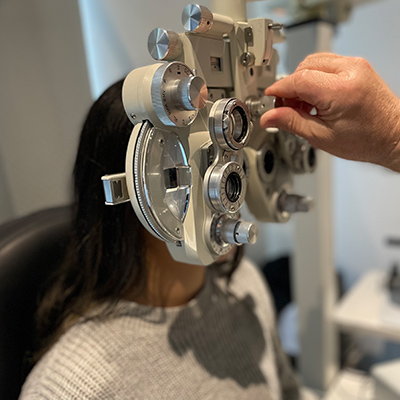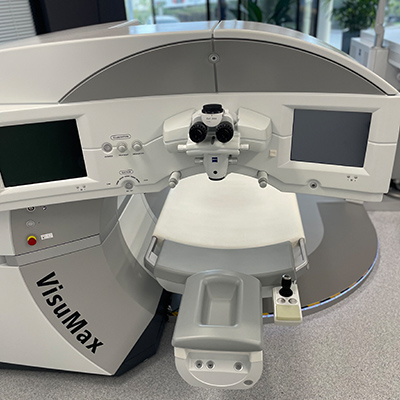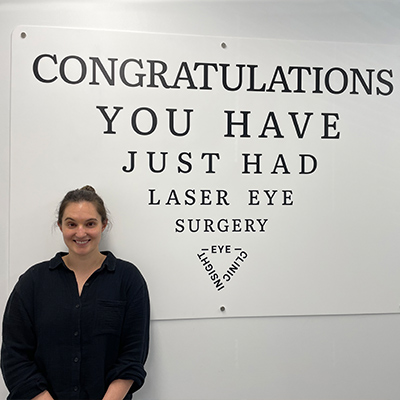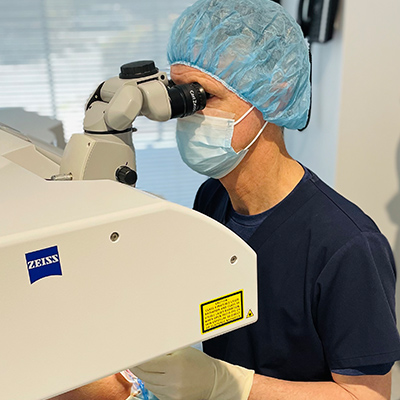Understanding Visual Migraines
Causes, Effects and Solutions

If you’ve ever experienced sudden flickering lights, shimmering zigzags or blind spots that last for several minutes before fading away, you may have had what’s known as a visual migraine. While often harmless, visual migraines can be unsettling – particularly if they occur regularly or at inconvenient times such as while driving, reading, or working on a screen.
At Insight Eye Clinic, we often see patients who come to us concerned about these episodes. In this blog, we’ll explore what visual migraines are, why they occur, and the strategies that can help reduce their impact — including how addressing underlying visual strain through refractive surgery may help in certain cases.
What is a Visual Migraine?
A visual migraine (also called an ocular or ophthalmic migraine) is a temporary disturbance in vision that usually lasts anywhere from 5 to 30 minutes. Unlike a classic migraine, which is often accompanied by throbbing head pain, nausea, or sensitivity to light and sound, visual migraines primarily affect the eyes and vision.
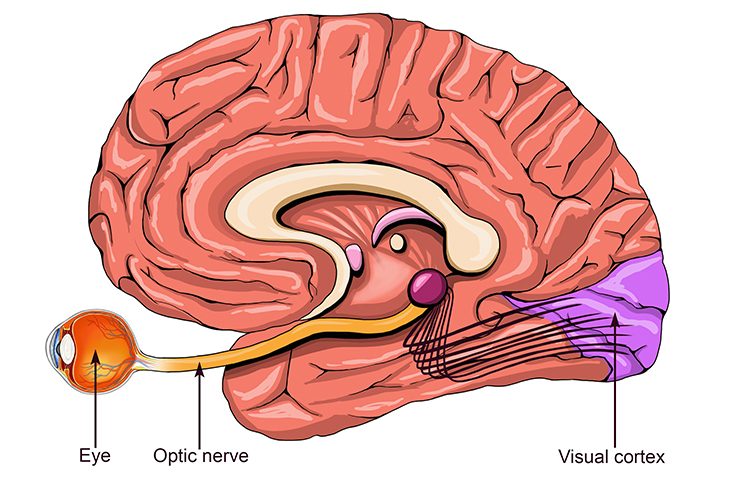
Typical symptoms include:
>Bright flashing lights or shimmering spots in the vision.
>Zigzagging lines or patterns that seem to move across the visual field.
>Temporary blind spots (known as scotomas).
>Difficulty focusing on words or objects.
The symptoms often start small and then expand, sometimes creating a “kaleidoscope effect.” While they can occur with or without headache, many patients report that the visual phase resolves before any head pain begins.
What Causes Visual Migraines?
The exact cause isn’t fully understood, but visual migraines are believed to result from changes in blood flow to the brain and the visual cortex (the part of the brain responsible for processing sight). Temporary spasms in blood vessels can reduce blood supply, leading to these unusual visual disturbances.
Common triggers include:
- Eye strain from prolonged screen use, digital devices, or poorly corrected vision
- Stress and fatigue — both physical and emotional stress can provoke episodes
- Hormonal changes, particularly in women
- Dehydration and dietary factors such as caffeine, alcohol, or skipping meals
- Bright light exposure or sudden changes in lighting conditions
For patients who already have refractive errors (short-sightedness, long-sightedness or astigmatism), uncorrected or poorly corrected vision may place additional strain on the eyes. This strain can increase the likelihood of visual migraines in some individuals.
Are Visual Migraines Dangerous?
Most visual migraines are considered benign and resolve on their own. However, frequent or severe episodes should always be discussed with your eye specialist. Visual disturbances can sometimes mimic other eye or neurological conditions, such as retinal detachment or transient ischaemic attacks (TIAs), which require urgent attention.
If you experience sudden flashes of light, a dark curtain over your vision, or persistent vision loss, you should seek medical care immediately.
Managing and Reducing Visual Migraines
While there isn’t a single “cure” for visual migraines, there are several approaches that can reduce frequency and severity:

- Identify and avoid triggers
Keeping a migraine diary can help patients pinpoint triggers such as certain foods, stress, or environmental factors. - Optimise lifestyle factors
Staying hydrated, getting regular sleep, and managing stress through exercise or relaxation techniques can all be beneficial. - Protect your eyes
Reducing digital eye strain with regular breaks (the 20-20-20 rule), adjusting screen brightness, and wearing appropriate lenses can help. Sunglasses with quality UV protection may also reduce glare-related triggers. - Medication and supplements
For recurrent migraines, some patients may be prescribed medications to reduce frequency or severity. Magnesium supplements, for example, have shown benefits for some individuals.
Could Refractive Surgery Help?

Interestingly, patients who undergo laser eye surgery such as SMILE, LASIK, or PRK often report a reduction in visual strain-related symptoms, including those linked to visual migraines. While refractive surgery is not a direct treatment for migraines, improving the quality of vision can relieve constant eye strain — which, for some, may play a role in triggering episodes.
For example:
- Eliminating dependence on glasses or contact lenses can remove the distortions or glare that sometimes contribute to visual discomfort.
- Reducing digital eye strain is possible when vision is corrected precisely to the individual’s needs.
- More stable vision correction compared to contact lenses may reduce fluctuations that stress the visual system.
At Insight Eye Clinic, we’ve seen patients who experience fewer visual migraines after surgery, particularly those whose episodes were closely tied to eye fatigue or poorly corrected refractive errors. Of course, every case is unique, and surgery may not affect migraines that are primarily vascular or neurological in origin. This is why a thorough consultation with Dr Graham Furness and our team is so important — we’ll help assess whether refractive surgery could play a role in reducing your symptoms*.
*Please note that there are no guarantees as to whether or not refractive surgery will improve your visual migraines.
The Patient Journey at Insight
If you’re concerned about visual migraines, our first priority is ensuring a thorough eye examination to rule out any underlying eye disease. We’ll discuss your symptoms in detail, review your visual history, and if refractive surgery is being considered, we’ll assess how your current visual correction may be contributing to the problem.

Should surgery be suitable, you can feel confident knowing that Dr Furness combines the latest technology with 20+ years of proven surgical outcomes. Our patients consistently highlight not only their improved vision, but also the dramatic improvement in day-to-day comfort, reduced eye strain, and enhanced quality of life.
Final Thoughts
Visual migraines can be a nuisance, but with the right management strategies; from lifestyle adjustments through to vision correction, many patients find relief. While not everyone’s episodes will improve with refractive surgery, correcting vision and reducing strain is an important step toward supporting long-term eye health and comfort.
If you’ve been struggling with visual migraines or feel that your current glasses or contact lenses aren’t giving you the clarity you deserve, book a consultation at Insight Eye Clinic. Together, we can explore the best solutions for your vision and help you see the world with greater comfort and clarity.



